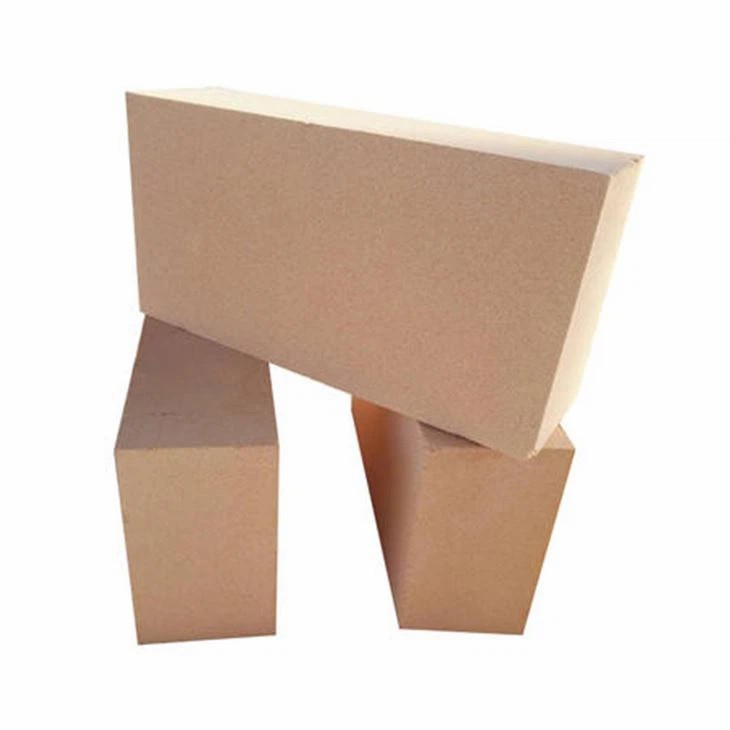PRODUCTS
Light Weight Fireclay Brick
Light weight fireclay brick and general firebrick, light weight, internal uniform cloth has a small air hole, air hole rate is higher. As a result, less heat is guaranteed to escape from the furnace walls, and the cost of fuel falls accordingly, the lightweight brick also means less heat storage, so it heats up and cools down faster, allowing for faster cycles. Light weight fireclay brick is suitable for 900℃ ~ 1650℃ temperature range. The production methods of light weight fireclay brick mainly include hollow sphere bonding forming method, pre-filled material burning method, chemical react
Composition: Premium materials such as high alumina oxide, magnesium oxide, and silicon carbide, with customizable composition based on client requirements.
Form: Available in powder, brick, board, and castable forms to suit various application needs.
Refractoriness: Standard range from 1200°C to 1800°C, with options for higher temperature customization.
Application Fields: Widely used in industries such as steel, cement, glass, and petrochemicals for furnace lining and insulation.
Packaging: Options include 25 kg bags, bulk bags, and custom packaging solutions compliant with global transportation standards.
Introduction
Our experienced R&D team can customize the material, form, and size according to your specific application needs while ensuring compliance with international quality standards. With rigorous quality control and advanced production facilities, we guarantee products with high refractoriness, excellent compressive strength, and long-lasting durability. Whether you are in the steel, cement, glass, or petrochemical industry, we are your trusted partner, supporting the success of your projects.
For customization inquiries, please feel free to contact us. We will provide tailor-made solutions based on your requirements.
Light Weight Fireclay Brick Details
Light weight fireclay brick and general firebrick, light weight, internal uniform cloth has a small air hole, air hole rate is higher. As a result, less heat is guaranteed to escape from the furnace walls, and the cost of fuel falls accordingly, the lightweight brick also means less heat storage, so it heats up and cools down faster, allowing for faster cycles. Light weight fireclay brick is suitable for 900℃ ~ 1650℃ temperature range.
The production methods of light weight fireclay brick mainly include hollow sphere bonding forming method, pre-filled material burning method, chemical reaction bubbling method, pre-embedded volatile material driving method and foam premixed casting forming method. The most commonly used method in actual production is the incineration of pre-filled materials. However, harmful gases will be released in the process of forging and burning when the filling materials are organic, corroding the equipment and polluting the environment. For high porosity insulation bricks, the cost is significantly increased due to the increase of filler, while the uneven distribution of filler leads to uneven pore distribution and unsatisfactory product quality. The porosity of the heat-insulating brick prepared by foam premixed casting method is uniform and high, but its low compressive strength is not conducive to handling and mass production
Features
1. Low thermal conductivity, with good heat insulation effect;
2. Low thermal melting. Due to low thermal conductivity, mullite series light thermal insulation brick accumulates little heat energy, which has obvious energy-saving effect in intermittent operation;
3. High thermal compressive strength;
4. Can be processed into special shapes. To reduce the number of bricklaying blocks and joints, saving costs;
5. Low content of impurities, with very low content of oxide such as alkali metal in iron box, therefore, high refractoriness; The high aluminum content makes it maintain good performance in reducing atmosphere.
6. Accurate appearance size, speed up the masonry, reduce the amount of refractory mud, ensure the strength and stability of the masonry, thereby prolonging the life of the lining.
Application
It has a wide range of applications, mainly used in thermal equipment and industrial kiln heat insulation layer, can be used for no strong high temperature molten material erosion and erosion effect of parts, some directly contact with the flame surface coated with a layer of refractory coating, reduce slag erosion and furnace gas dust erosion, reduce damage.
Physical And Chemical Indicators
|
Brand Properties |
clay |
High aluminum |
|||||
|
NG-0.5 |
NG-0.6 |
NG-0.8 |
NG-1.0 |
LG-0.6 |
LG-0.8 |
LG-1.0 |
|
|
Bulk density(g/cm3) |
0.5 |
0.6 |
0.8 |
1.0 |
0.6 |
0.8 |
1.0 |
|
Normal temperature compressive strength(MPa)≥ |
1.5 |
2.0 |
2.5 |
3.4 |
1.96 |
2.94 |
4.0 |
|
Reburn line changes 1300℃×12h(%)≤ |
12500.5 |
13000.5 |
13500.5 |
13500.3 |
13500.5 |
14000.5 |
14500.5 |
|
Average temperature of thermal conductivity 350±25℃(w/k·m) |
0.18 |
0.25 |
0.35 |
0.5 |
0.25 |
0.32 |
0.45 |
|
0.1MPa Initial temperature of softening under load(℃)≥ |
1160 |
1250 |
1280 |
1300 |
1300 |
1350 |
1380 |
|
Al2o3(%)≥ |
35 |
40 |
42 |
42 |
50 |
52 |
52 |
|
Fe2o3(%)≤ |
2.5 |
2.5 |
2.0 |
2.0 |
1.8 |
1.6 |
1.5 |
|
Maximum service temperature(℃) |
1150 |
1200 |
1280 |
1300 |
1300 |
1350 |
1380 |













